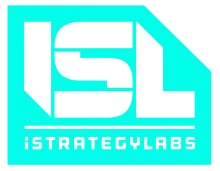
On an ongoing mission to find inspiring individuals disrupting markets, industries and organizations, I sat down with Kapil Parakh, Director of Heart Failure at Johns Hopkins Bayview Medical Center. Not only is he bringing Lean Startup methodology into his medical practice, but he most recently helped launch Health For America.
So Kapil, tell us exactly what you do?

I am a cardiologist and the Director of Heart Failure at Johns Hopkins Bayview Medical Center. This is a community hospital in the Hopkins network and our team has created a program to take care of patients with heart failure. In addition to running the program, I see patients in clinic, on the wards and in the ICU. I also teach students, residents and fellows and hold joint appointments in the School of Medicine and the School of Public Health as an Assistant Professor.
How has lean startup methodology influenced your role?
Lean Startup was critical in creating our program. With few resources at our disposal and many ideas to improve care, we were essentially a startup within a 240 year old institution. We had to come up with Minimum Viable Products (MVPs) to see which concepts might work. We also had to be nimble enough to pivot when we thought things were not working out.
I have a PhD in epidemiology and this training blended perfectly with the focus on metrics and research in the lean startup approach. For example, the A/B testing advocated by Lean Startup is very similar to randomized control trials in medical studies. It just made sense to apply the concepts into the healthcare setting to maximize impact and improve patient outcomes.
You presented at LeanUX NYC last weekend, what were your key points?
My talk really focuses on demystifying health care and opening it up to the Lean community. Healthcare deals with critical issues and it can be hard to see how to apply Lean Startup methodologies in this arena. I outline the specifics of how we made minimal viable products, tested hypotheses and either persevered or pivoted.
I also describe how we incorporated Lean Startup as part of a broader framework for change. Our program used Lean Sigma to figure out the variance in care, we then used design thinking and brain storming techniques in partnership with IDEO to come up with solutions. Finally, we used Lean Startup to create MVPs and test these solutions. The result was a reduction in our readmission rates to one of the best in the country and we have been invited to present this work at national cardiology conferences. I am hopeful that we can inspire others in the health system to try our approach.
What startups or technology inspire you today?
It is hard to single out a single startup or technology. Rather, I focus on trends across sectors and try to distill lessons that I can apply to our program. One of the most important lessons I have found from studying many startups is that they have a deep understanding of their users and the pain point the are trying to solve. If you can empathize with the user/patient and really figure this out, whether you are a startup or a hospital, you can figure out ways to help them and improve your metrics.
Another exciting aspect of technology is its customizability which gives us the ability to create unique win-win solutions. For example, when we were developing protocols for heart failure in the hospital and wanted to get doctors on board, the residents and interns were reluctant to use these protocols. Their concern was that a set of orders might make them less thoughtful and compromise their learning. We overcame this by creating links within our order entry system directly to the research studies so that they could learn as they were working.
We recently published an article entitled the Frontiers of Heart Failure that includes these order sets. Ultimately, these systems will eventually be able to mine all the available health data to create customized recommendations for each patient.
What challenges have you faced in bringing a different way of thinking into the Health realm, which has been relatively difficult to disrupt?
The health field has indeed been difficult to disrupt. Some of the major challenges are that things move slowly in health and incentives are not always aligned. Even MVPs have to meet certain standards and often need approval from administrators. Furthermore, many health providers are very conservative and reluctant to try new things and so adoption can be slow. The result is that it takes time to create interventions and to see the impact on metrics. It takes a deep understanding of the health system, as well as persistence and patience to affect change.
I know you’re also working on Health For America, tell us about that?
I am very excited about Health for America. In addition to getting our work out through scientific channels like conferences and papers, I have been exploring alternative ways to spread this thinking to other health institutions. I believe that one of the most effective ways to convey the concepts underpinning our work is to experience them firsthand. Therefore, I worked with a team to come up with a fellowship in which fellows partner with physicians and community leaders to create health solutions around chronic disease.
Our goal is to provide fellows with a unique opportunity to learn about health innovation while exposing their mentors and host institutions to entrepreneurial concepts. Young people have blazed pioneering paths in technology, but rarely have the opportunity to do so in health. We are hoping that our program will position fellows to create disruptive solutions throughout their careers.
I am delighted to say that we’re off to a great start. We founded the organization just eight months ago and are already accepting applications for our inaugural summer program which will be held in Louisville and Washington DC. Over the coming years, our goal is to grow this to a nationwide program that drives meaningful change and improves health while shaping the leaders of tomorrow.

This post is published in association with iStrategy Labs.
Image credit: Jupiter Images / Thinkstock
Get the TNW newsletter
Get the most important tech news in your inbox each week.





